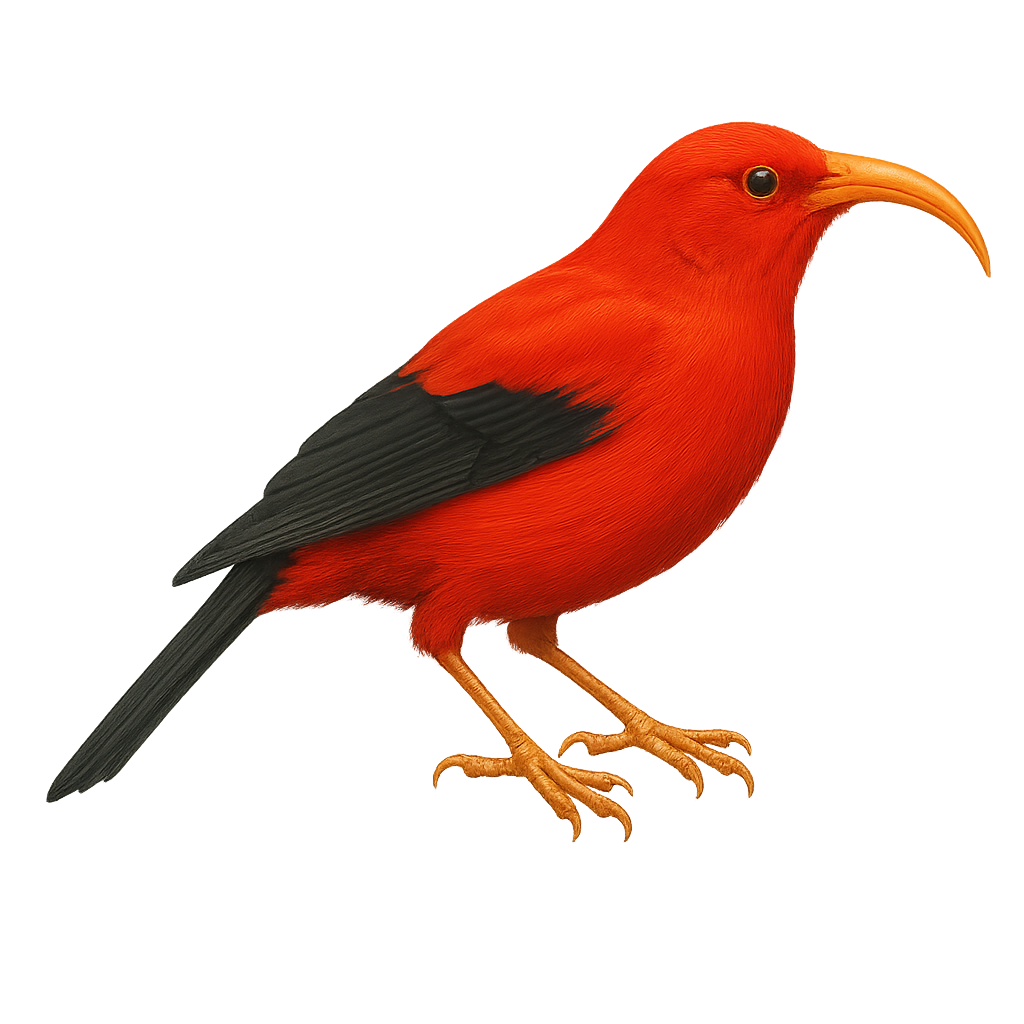Your wildlife photography guide.
Explore the hawaiian honeycreeper in detail, study its behavior, prepare your shots.
Where to observe and photograph the hawaiian honeycreeper in the wild
Learn where and when to spot the hawaiian honeycreeper in the wild, how to identify the species based on distinctive features, and what natural environments it inhabits. The WildlifePhotographer app offers tailored photography tips that reflect the hawaiian honeycreeper’s behavior, helping you capture better wildlife images. Explore the full species profile for key information including description, habitat, active periods, and approach techniques.
Hawaiian Honeycreeper
Scientific name: Drepanis coccinea

IUCN Status: Near Threatened
Family: FRINGILLIDAE
Group: Birds
Sensitivity to human approach: Suspicious
Minimum approach distance: 5 m
Courtship display: February to March
Incubation: 17-18 jours
Hatchings: February to April
Habitat:
Wet forests, tropical forests, mountainous areas
Activity period :
Primarily active during the day, with peak activity in the morning and late afternoon.
Identification and description:
The iiwi, or Drepanis coccinea, is an iconic bird of the Hawaiian forests. With its bright red plumage and black wings, it is easily recognizable. This bird measures about 15 cm in length and has a curved beak, adapted for collecting nectar, its primary food source. The iiwi plays a crucial role in pollinating native plants. Unfortunately, it is threatened by habitat loss, avian diseases, and introduced predators. Conservation efforts aim to protect its natural habitats and control invasive species. The iiwi is often observed in wet forests at various altitudes, where it moves agilely in search of flowers.
Recommended lens:
400mm – adjust based on distance, desired framing (portrait or habitat), and approach conditions.
Photography tips:
To photograph the iiwi, it is advisable to use a telephoto lens of at least 400 mm to capture detailed images without disturbing the bird. Look for areas where flowers are abundant, as the iiwi is often attracted to these resources. Be patient and discreet, as this bird can be suspicious. The best times to observe it are early in the morning or late in the afternoon, when activity is at its peak.
The WildlifePhotographer App is coming soon!
Be the first to explore the best nature spots, track rutting seasons, log your observations, and observe more wildlife.
Already 1 431 wildlife lovers subscribed worldwide

